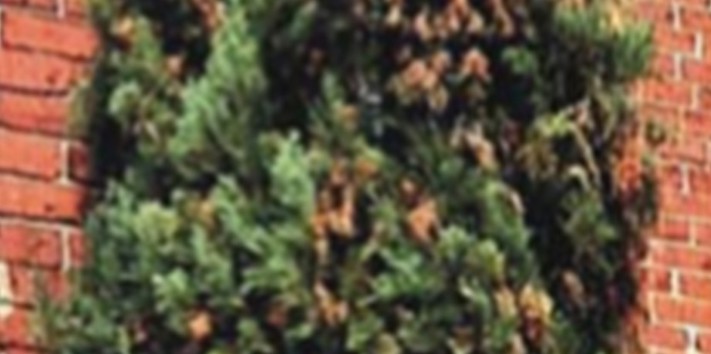
Seiridium Canker (Coryeym sp)

The best control for Seiridium cankers is irrigating trees during periods of drought or low rainfall. Photo by Arborilogical Services.

Published March 1, 2009 By ARBORILOGICAL SERVICES
Seiridium cankers are caused by the fungus Seiridium unicorne. With Seiridium canker, the cankers don't enlarge to girdle branches. Rather the cankers enlarge longitudinally, with multiple cankers developing around the branch. Collectively the cankers interfere with water flow and the branch wilts, yellows, and eventually turns brown. Because of the lack of water, the symptoms often resemble drought stress, and the needles will fall off when touched.
Seiridium canker is often the result of drought stress or some other kind of stress that weakens the tree. Infection requires a wound, but it appears to also enter through lenticels, although I was never able to conduct an experiment to prove it. As a result of this infection, Seiridium cankers often appear randomly distributed across the tree canopy, with some appearing yellow, some light tan, some brown.
All Seiridium cankers ooze sap profusely, but the canker is rather shallow. If cutting a Seiridium canker with a knife, cut at the oozing site, but cut shallowly, and beneath the bark layer the tissue underneath is usually bright red and and sticky because of the sap.
The best control for Seiridium cankers is irrigating trees during periods of drought or low rainfall. In field inoculated trees, Seiridium cankers developed after inoculating. However, under irrigation the trees were able to heal around the canker site so that within one to two years the canker should not be visible.
Although it is good to know the effect of irrigation, a recent study was actually set up to evaluate canker development over time - so healthy trees were a disappointment! In greenhouse tests they found that Seiridium cankers expanded three times faster on drought stressed trees than on non-drought stressed trees.
WHAT TO DO
On trees already infected, the best control is to prune the brown (dead) branches from the tree. This will make the tree look better, but also it will reduce disease spread by reducing the fungal innoculum. Once this is done, then irrigation is the best remedy to prevent any smaller cankers from expanding to kill more of the plant.
The one thing that has to be stressed is that the infection occurred years ago, and it is only now after the cankers have enlarged that the symptoms are evident. Therefore, fungicides are not effective in controlling the diseases at this time. There also is no good data that indicates that any fungicide is effective in controlling Seiridium cankers.

